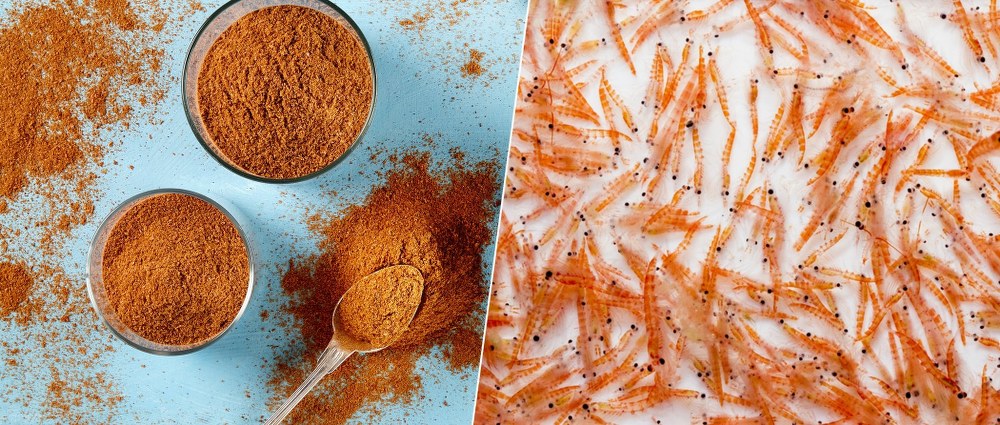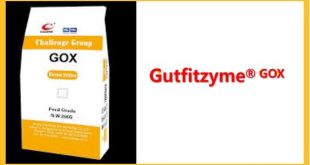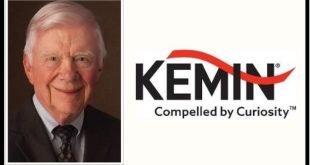 The wild fish harvested from the ocean and processed to become fish meal (FM) and fish oil (FO) are finite resources that are shared across a range of users with increasing demands, for direct human consumption, pig and poultry production, to aquaculture feeds (1; 2) (1, 2). Because of the high cost of fish meal and fish oil, due to increased demand and as mentioned limited resources, traditional small pelagic fish have also been increasingly replaced by vegetable feed ingredients in salmon feeds.
The wild fish harvested from the ocean and processed to become fish meal (FM) and fish oil (FO) are finite resources that are shared across a range of users with increasing demands, for direct human consumption, pig and poultry production, to aquaculture feeds (1; 2) (1, 2). Because of the high cost of fish meal and fish oil, due to increased demand and as mentioned limited resources, traditional small pelagic fish have also been increasingly replaced by vegetable feed ingredients in salmon feeds.
For example, during the past two decades, the amount of fish included in feed ingredients has dropped dramatically from 65 percent to 18 percent for fish meal and from 24 percent to 11 percent for fish oil (3). However, farmed salmon remains a main user of both fish meal and fish oil (2) so further complementary feed ingredients are required to support the salmon aquaculture market’s continue growth. There is an urgent need to find alternative feed resources that can further replace fish meal in Atlantic salmon diets, without compromising welfare and feed quality, in particular during the finishing feeding period when the feed demand is highest and flesh quality effects are most significant.
Antarctic krill meal is considered a unique and genuinely sustainable raw ingredient, high in protein content, favourable amino acids and fatty acid profiles, and with enhanced palatability properties. It has also been suggested that the low molecular weight soluble compounds of krill meal, such as nucleotides, amino acids and high levels of trimethylamine N‐oxide, all act together to make krill meal an effective attractant and flavoring agent. This has been confirmed in various species, such as salmon (3) resulting in a healthier and more robust farmed fish.
Krill meal as a feed ingredient for salmonids
Various aquafeed publications and scientific articles have examined krill meal’s proteins, palatability, pigment, heavy metals, dioxins and other important compounds and how krill impacts aqua feeds. Pages and pages of text show that Antarctic krill meal’s nutritional attributes make it a unique feed ingredient for aqua-feeds due to its unique protein quality, strong palatability, natural beta‐carotene (in the form of astaxanthin), excellent lipid and minerals profile and its chitin and chitosan constituency. Krill meal’s negligible amount of dioxins, PCB’s and heavy metals are also a key asset when adding it to feed formulations.
Krill meal is an excellent source of protein (average 60% dry basis) with an interesting profile of amino acids. Regarding palatability, krill meal has a low molecular weight of soluble compounds such as nucleotides, amino acids in the form of proline and glycine, glucosamine, and high levels of trimethyl amine oxide, TMAO. All of these act together as an effective attractant and flavouring agent.
Krill meal’s high TMAO content has an extra osmoregulatory contribution, useful in reducing salmon’s physiological stress when they are transferred from fresh to seawater and it has also been successfully used in low palatability diets containing vegetable proteins and/or antibiotics. Antarctic krill meal’s natural pigment (in the form of astaxanthin) increases flesh pigmentation in salmon, trout, yellowtail, shrimp and other farmed species.
Beta‐carotene astaxanthin found in krill meal also plays an important role in the regulation of fish’s immune systems, enhancing disease resistance, boosting survival rates and acting as an essential fish growth regulator. Krill meal chitin content found in raw krill shell is typically at an average content of two-to-four percent of chitin and the resulting krill meal is used as an immune system stimulant in some fish species.
For traditional krill meal processing layouts, around 70 percent of raw krill original fat content remains bonded to krill meal protein. This fat contains high omega-3 concentrations linked to phospholipids, whereas EPA & DHA are found in the range of 19-to-24 percent, or higher (as part of lipids). The fat has a high content of phospholipids (40% of lipids). As a result, fish fed with diets containing krill meal increase their natural omega-3 and natural astaxanthin content.
Krill meal shows a remarkably low content of undesirable substances, such as heavy metals and dioxins, on account of the unpolluted waters where it is captured and processed. The fishing grounds of South Antarctica have their own natural barriers to such substances, such as sea current activity, circumpolar atmospheric winds and limited human intervention. Industrial contamination is also at a minimum and the heavy metals which are found in this area come primarily from volcanic activity, the main estimated pollutant source for Antarctic marine species.
Krill meal certified as sustainable
The Antarctic krill fishery is one of the world’s most sustainable fisheries and, for the second year in a row, has received an ‘A’ ranking from the Sustainable Fisheries Partnership for having a biomass that is deemed to be in very good condition. One of the most regulated fisheries in the world, all catches of krill are reported to the Commission of the Conservation of Antarctic Marine Living Resources (CCAMLR), and while other fisheries have precautionary catch limits set to 10 percent of the biomass, the total allowable catch of Antarctic krill is set to just one percent of the biomass.
Together, the whole industry only fish 0.3 percent of the biomass in subarea 48, located around the Antarctic Peninsula, the Orkney Islands and South Georgia. This careful management of the fishery is very stable, as the consensus of 28 nations is needed before any changes to the regulations can be made. Aker BioMarine is doing its part to ensure this special resource remains a sustainable one and is recognised for its eco-harvesting technology, reducing by-catch to near-zero, being the very first krill supplier to receive the Marine Stewardship Council (MSC) certification, and for bringing the entire industry together to work on sustainability.
Krill meal: An ingredient to promote salmon health
A fundamental salmon study conducted by NOFIMA investigated the efficiency of substituting an isoprotein (35%) and isolipid (35%) 30 low FM diet (15%) with Antarctic krill meal (12%) during three-months with growing finishing 2.3±0.3kg salmon (quadruplicate sea cages/diet). The body weight increased from 2.3kg to 3.9kg during the feeding period. The males were 8.8 percent heavier than the females (4.1kg vs. 3.7kg; P < 0.0001), but diets had no effect on final weight, thermal growth coefficient, feed conversion ratio, or biometric traits, except for the body shape that was more voluminous for the krill meal group (higher condition factor).
An interesting observation from the liver microarray analyses was a 2.4 fold higher expression of cadherin-13 (Cdh13) in the krill meal (KM) group. Chd13 is associated with circulating level of the adipocyte-secreted protein adiponectin that has anti-inflammatory potential and plays an important role in metabolic regulation, associated with the fatty liver index in humans. Upregulation of tight junction proteins (connexin, 1.6 fold) indicates improved cell-cell communication of salmon fed krill supplemented diets, and Willebrords et al. reported involvement of connexin hemichannels in non-alcoholic steatohepatitis.
Among genes shown to have a role in immune surveillance of KM was upregulation of ladderlectin (3 genes, 1.5-1.8 fold) with broad pathogen recognition in rainbow trout. In addition to the liver, dietary krill meal inclusion appeared to improve gut health as ectopic epithelial cells and focal calcium deposits were not observed in KM. The presence of ectopic epithelial cells in the intestine have been associated with chronic feed-induced gut inflammation associated with plant-based ingredients. Focal accumulation of calcium in necrotic tissue (dystrophic calcification) has previously been observed in intestinal inflammation in Atlantic salmon.
Krill meal improves fillet quality in salmon finishing diets
Salmon farming is high-quality food production. Therefore, it is vital that the fillet quality meets the consumer’s expectations. Visual appearance is the most important property of foods in determining their selection for actual consumption, while salmon with insufficient firmness are downgraded, leading to severe economic losses to the farming and processing industries. The present study was conducted during the autumn that is the most critical period of the year with regard to consumers’ complaints on pale fillet colour, gaping and soft texture, independent of the geographic salmon farming region. At the same time, this period is characterised by being the part of the year when the highest volume of harvested salmon.
For salmon fillets, a colour intensity corresponding to SalmoFan colour score of 25 in the posterior standard Norwegian Quality Cut (NQC) cutlet meets most costumers demands, while lower scores increase the risk for quality downgrading. Krill meal significantly improved the overall colour, and all fillets of the krill meal group had SalmoFan score ≥ 25 while 13% of the FM group had salmon below the general acceptance level (P = 0.03). Astaxanthin is the most common carotenoid used for pigmentation of farmed salmon, and the pale colour of salmon fillets during periods with high growth has been explained by a negative correlation between feed intake and apparent digestibility of astaxanthin.
Since the TGC and dietary astaxanthin content were similar of the FM and krill meal, krill meal seems to stimulate pigment retention. Dark discoloured spots are major causes to quality downgrading of farmed salmon fillets. The krill meal group had eight percent lower prevalence of dark spots, but the difference was not significant. Improved firmness and integrity (less gaping) by supplementing salmon finishing diets with krill meal showed significant correlation.
A range of biochemical and molecular factors support the view that fillet texture is multifactorial, with complex biological interactions. Previous studies have documented that collagen characteristic is a major determinant of salmon fillet firmness. However, in the present study, lower presence of single α-helix, lower random coil, and lower disordered structures in krill meal collagen molecule suggest higher preservation of collagen native structure in contrast to FM. As previously reported, all these findings indicate a more preserved native structure and less aggregated collagen molecule in krill meal than in the FM group.
Conclusion
The present experiment aimed to fill key gaps in the current knowledge on how dietary krill meal supplementation affects the welfare and meat quality of Atlantic salmon. The results showed that feeding, growing and finishing salmon with diets supplemented with krill meal improved both welfare and fillet quality. These results coincided with upregulation of immune genes, proteins defining muscle properties and genes involved in cell contacts and adhesion, altered fatty acid metabolism and fat deposition, and improved gut health. Higher fillet firmness coincided with more compact and well-organised collagen architecture and the predominance of native collagen structure.
- by Aker BioMarine, Norway
 Agrinews24 কৃষির সাথে, কৃষকের পাশে
Agrinews24 কৃষির সাথে, কৃষকের পাশে





















